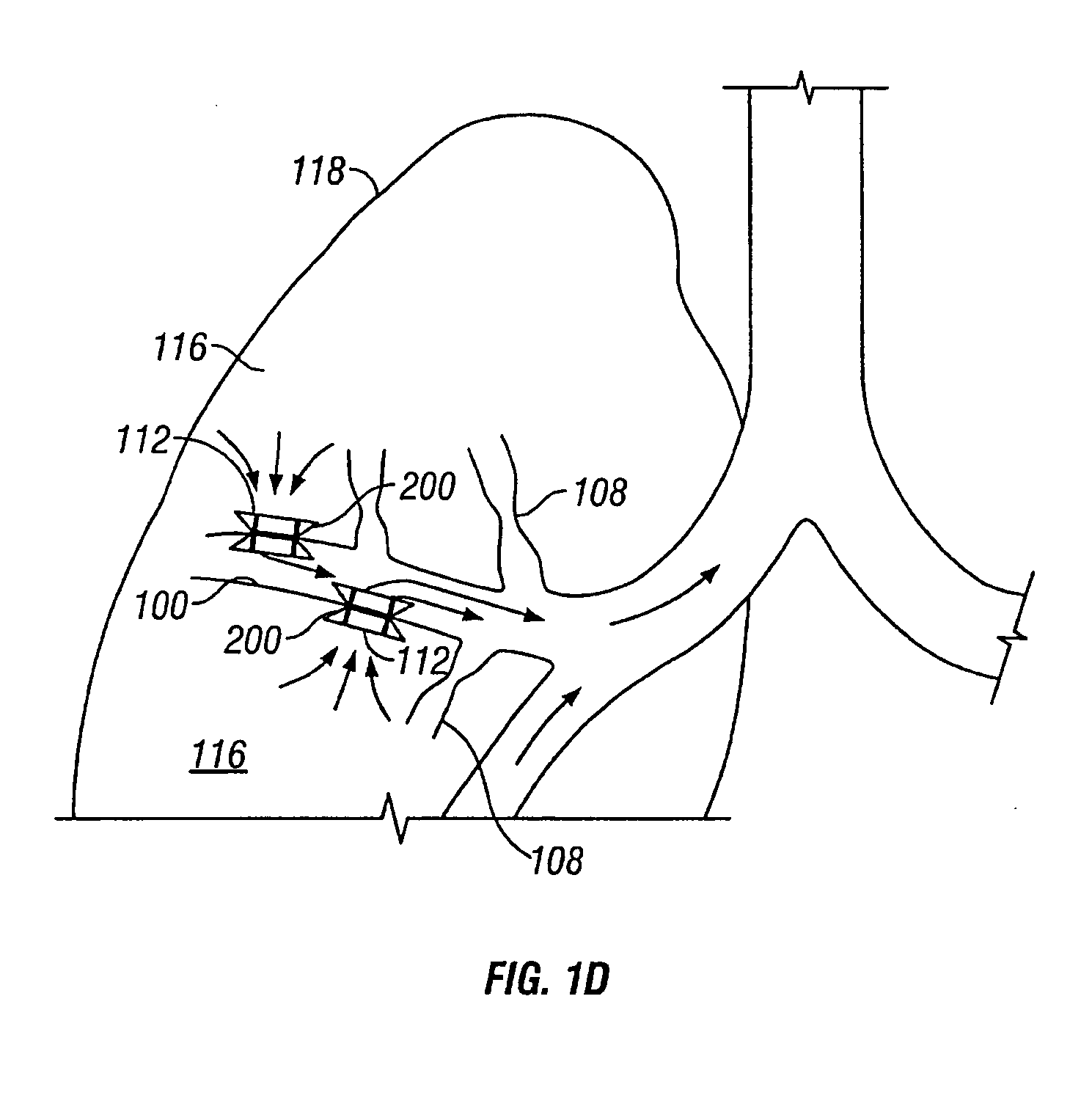Devices for maintaining surgically created openings
a technology of surgical creation and openings, applied in the direction of surgical staples, prostheses, blood vessels, etc., can solve the problems of copd-afflicted individuals, loss of muscle strength, and inability to perform common daily activities, so as to prevent additional wound healing and reduce tissue growth
- Summary
- Abstract
- Description
- Claims
- Application Information
AI Technical Summary
Benefits of technology
Problems solved by technology
Method used
Image
Examples
Embodiment Construction
[0063] Described herein are devices and methods for improving the gaseous exchange in the lung. In particular, a conduit is described that serves to maintain collateral openings or channels surgically created through an airway wall so that air is able to pass directly out of the lung tissue and into the airways. This facilitates exchange of oxygen into the blood and decompresses hyper inflated lungs.
[0064] By “channel” it is meant to include, but not be limited to, any opening, hole, slit, channel or passage created in the airway wall. The channel may be created in tissue having a discrete wall thickness and the channel may extend all the way through the wall. Also, a channel may extend through lung tissue which does not have well defined boundaries such as, for example, parenchymal tissue.
[0065] As stated above, the conduits described herein may improve airflow through an airway in the lung. Simplified illustrations of various states of a natural airway and a blood gas interface ...
PUM
 Login to View More
Login to View More Abstract
Description
Claims
Application Information
 Login to View More
Login to View More - R&D
- Intellectual Property
- Life Sciences
- Materials
- Tech Scout
- Unparalleled Data Quality
- Higher Quality Content
- 60% Fewer Hallucinations
Browse by: Latest US Patents, China's latest patents, Technical Efficacy Thesaurus, Application Domain, Technology Topic, Popular Technical Reports.
© 2025 PatSnap. All rights reserved.Legal|Privacy policy|Modern Slavery Act Transparency Statement|Sitemap|About US| Contact US: help@patsnap.com



